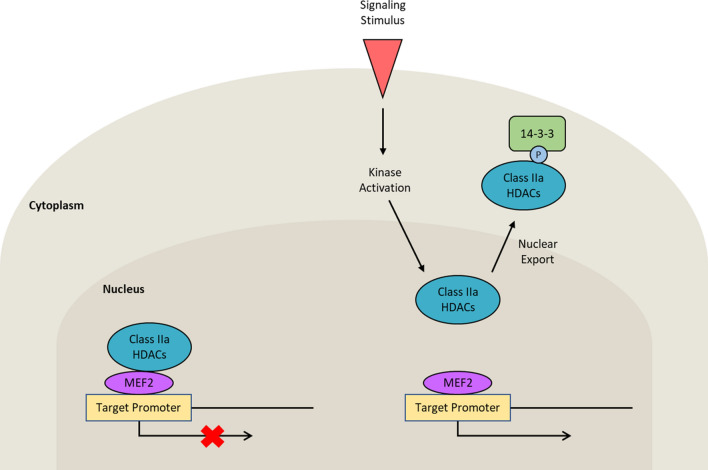Fig. 2.
14-3-3-mediated nuclear export of phosphorylated Class IIa HDACs. One of the general mechanisms by which Class IIa HDACs are regulated is phosphorylation-dependent change in subcellular localization. Though the phosphorylation of Class IIa HDACs can promote their nuclear import or export under specific stimuli and cellular contexts, many studies have presented the finding that the phosphorylation of Class IIa HDACs promotes their binding to 14-3-3 proteins and nuclear export under a wide variety of stimuli and contexts. As a consequence of their localization in the cytoplasm, Class IIa HDACs are unable to repress MEF2-mediated gene transcription [52–54]. P phosphate

